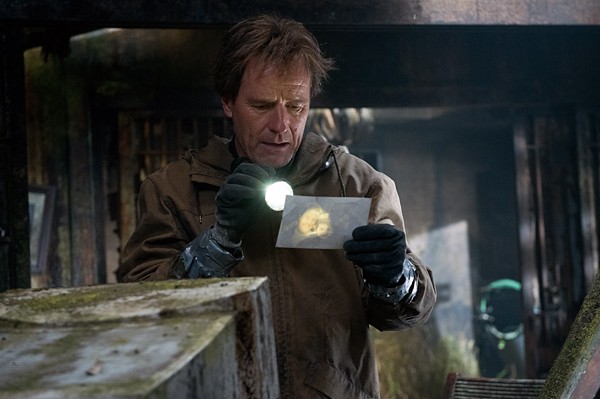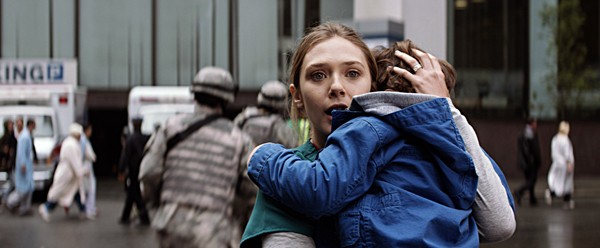Fish. Everybody likes them, but some people really like them.
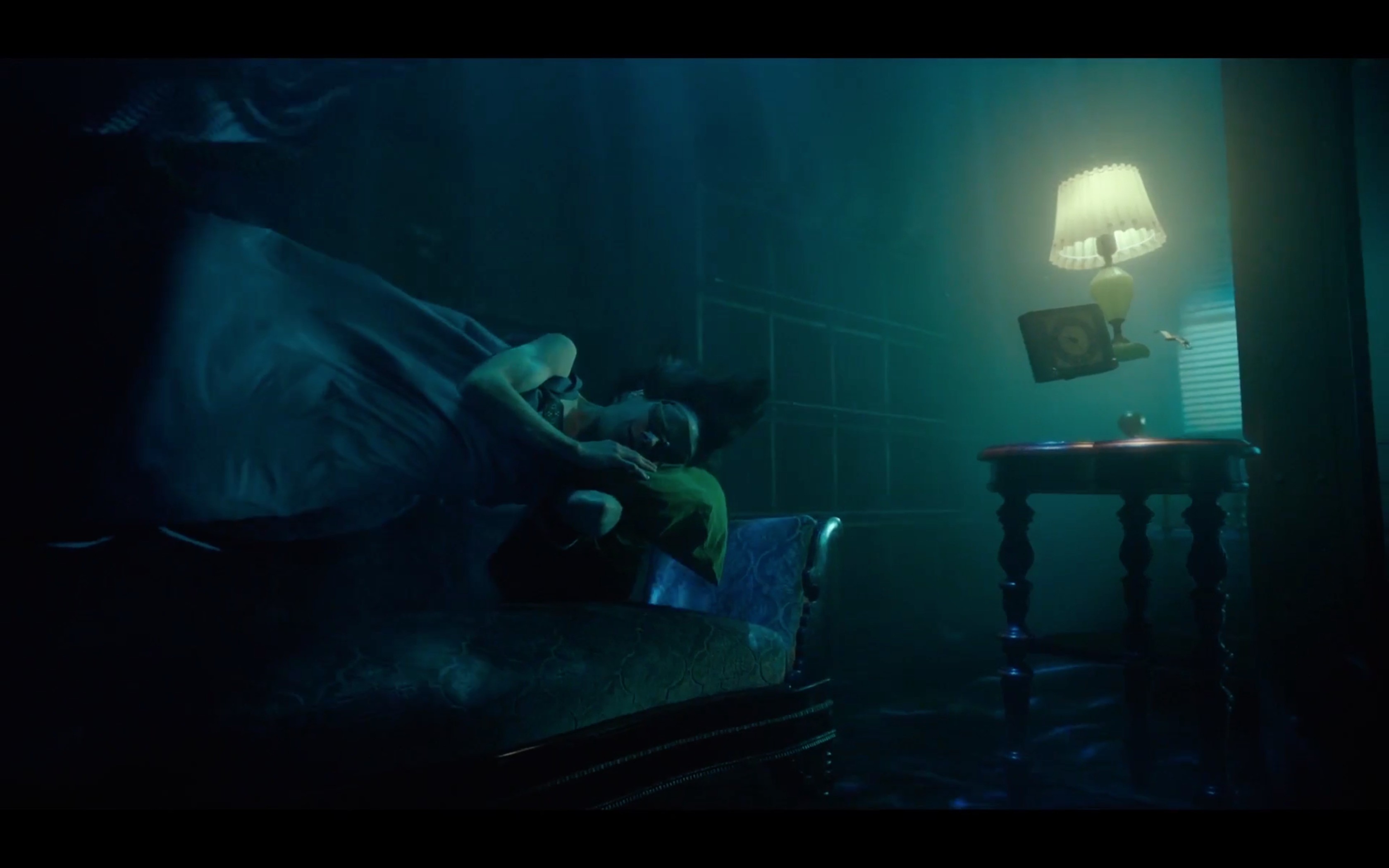
I’m going to try to keep the jokes to a minimum in this review, because Guillermo del Toro’s The Shape of Water is a good movie. You might even call it the Citizen Kane of fish fetishist films.
OK, I’ll stop. I promise. The Shape Of Water begins beautifully, with an art deco apartment completely submerged in water, with the furniture floating everywhere, and our heroine Elisa Esposito (Sally Hawkins) suspended in ecstasy. The apartment drains suddenly as Elisa wakes from her dreamworld to discover that she is still in 1962 Baltimore, and her existence is just as dreary as she left it. Elisa, rendered mute from a childhood injury that left her throat scarred, works in housekeeping at a secret government lab. She’s not unhappy, per se—she’s got her bestie Zelda (Octavia Spencer) to watch her back at work, and her neighbor Giles (Richard Jenkins), a commercial artist freelancing after he lost his job for being gay—but she’s not exactly fulfilled, either. The highlight of most days for her is masturbating in the tub. Yeah, she’s got a thing for water.

(The apartment, by the way, is above a movie theater called The Orpheum whose signage and interior looks almost exactly like Memphis’ venerable Downtown treasure.)
A lot of weird stuff goes through the lab, and the housekeeping staff is used to keeping their mouths shut and mopping up the occasional pool of unexplained blood. But nothing prepares Elisa for the moment she sees the lab’s latest asset, a humanoid amphibian that, for complex copyright reasons, I can’t say looks like a super cool version of the Creature from the Black Lagoon. In charge of the Asset is Col. Strickland (Michael Shannon), a sexually harassing creep whose idea of scientific research is torturing Amphibian Guy with an electric cattle prod he calls his “Alabama Howdy-Do”.
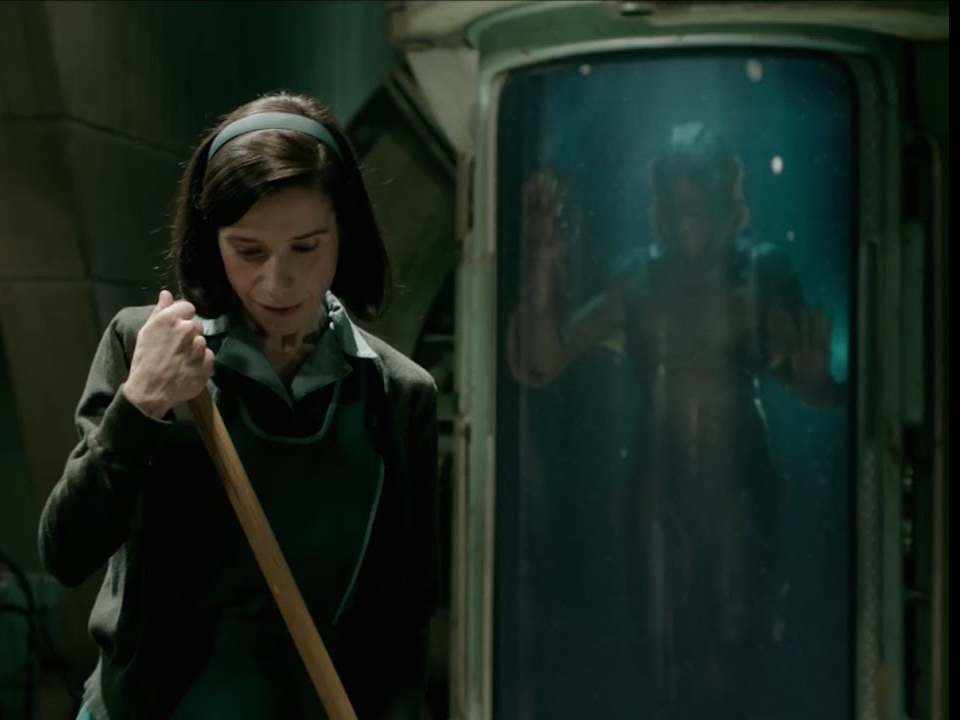
Elisa takes pity on the poor amphibian and starts sneaking into the lab to feed him eggs and play him Benny Goodman tunes on her portable turntable. As his condition deteriorates, and she overhears plans to vivisect the Asset, she hatches a hairbrained plan to bust him out of the lab and return him to the ocean. Naturally, things spiral out of control, and she and her new fishy beaux are plunged into a whirlpool of Soviet spies, shady scientists, and aquatic intrigue.
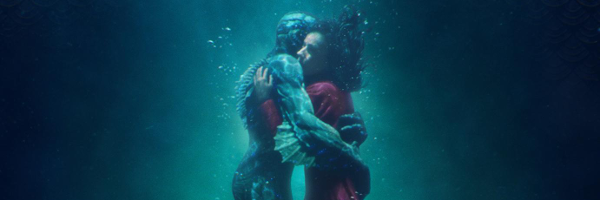
The Shape Of Water grew out of del Toro’s failed pitch to direct a reboot of The Creature From The Black Lagoon for Universal’s monster universe. Those execs are probably kicking themselves for passing over del Toro in favor of Tom Cruise’s excruciating remake of The Mummy. The Shape Of Water is a return to form for del Toro after his gothic horror romance Crimson Peak—which, admittedly, some people liked, but I thought was tedious and silly. The difference here is Hawkins, whose near wordless performance mixes perfectly with del Toro’s always inventive visual sense. She actually manages to have good chemistry with the six-foot amphibian, played in a horribly restrictive, CGI-augmented suit by Doug Jones (but not that Doug Jones). The premise is goofy as hell, but late in the film, when Elisa slips into a dream where she and her Special Amphibian Friend dance in a big musical number, I realized that del Toro had drawn me into this world. The Shape Of Water will charm the pants off of you, and you won’t even mind the fishy smell afterwards.
The Shape Of Water

